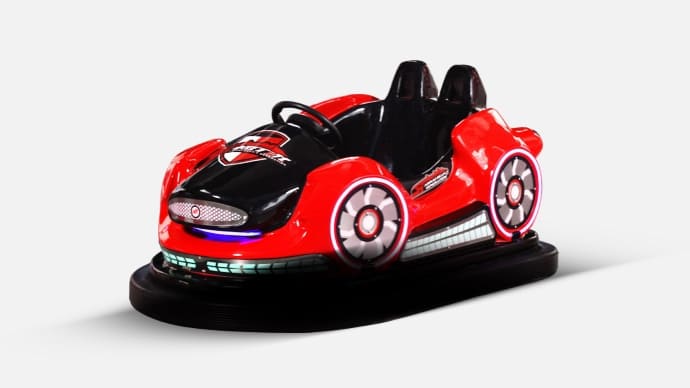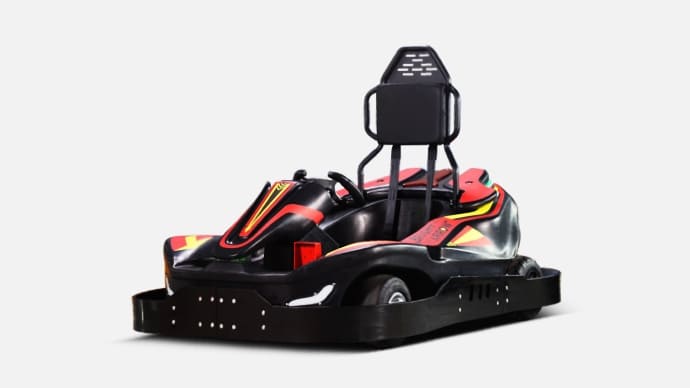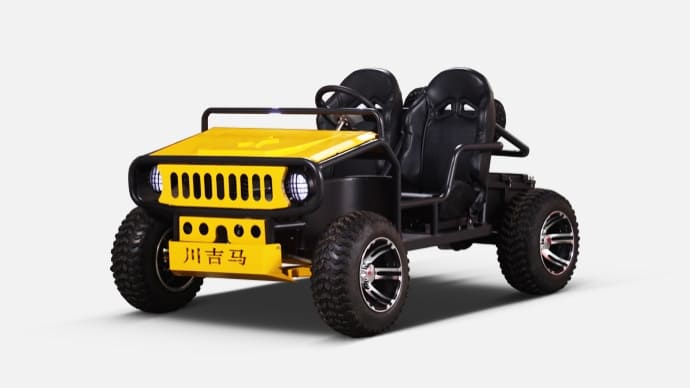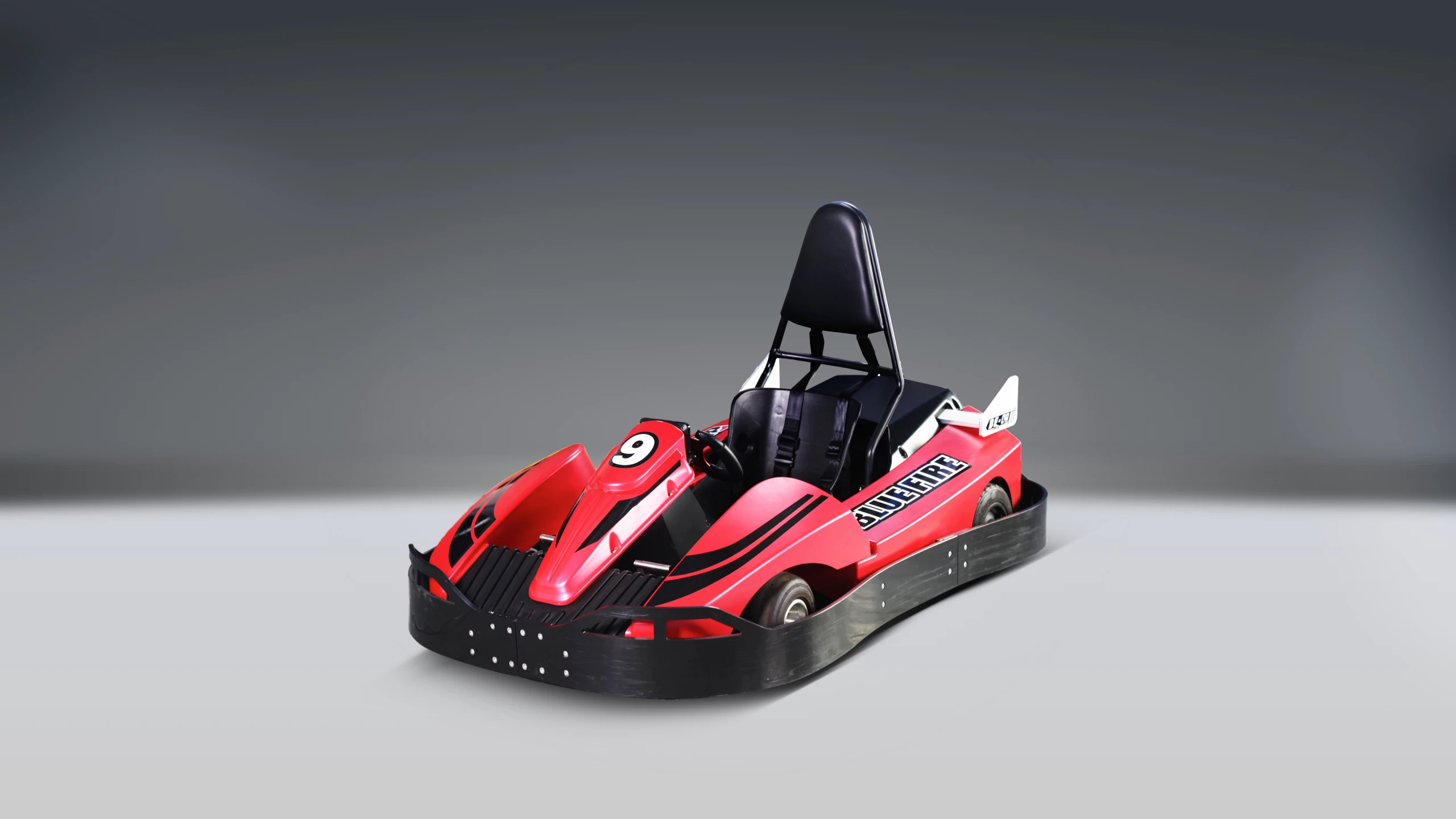Electric Go Kart Batteries: Charging, Lifespan, Recycling
- Overview: Why Battery Care Matters for Electric Go Karts
- Common Battery Types for Electric Go Karts
- Charging Best Practices for Electric Go Karts
- Use a Proper Charger and BMS
- Avoid Deep Discharges
- Temperature Matters
- Fast Charging Trade-offs
- Lifespan Expectations and How to Maximize Them
- Typical Lifespan by Use Case
- Maintenance Habits that Extend Life
- Operational Strategies for Venues Running Electric Go Karts
- Battery Swapping vs. On-the-Kart Charging
- Fleet Monitoring and Telemetry
- Safety Considerations for Charging and Storage
- Designated Charging Rooms
- Training and Emergency Procedures
- Recycling and End-of-Life Options for Electric Go Kart Batteries
- Collection and Manufacturer Take-back
- Recycling Technologies and Material Recovery
- Regulatory and Environmental Considerations
- Cost Considerations: Initial Investment vs. Lifetime Cost
- Why Partner with a Manufacturer like ANCHI Amusement
- FAQ — Common Questions on Electric Go Kart Batteries
- Q: How long does an Electric Go Kart battery last per charge?
- Q: How long should I charge Electric Go Kart batteries?
- Q: Which battery type is best for commercial Electric Go Karts?
- Q: Can batteries be recycled locally?
- Q: Does ANCHI help with battery and charging system selection?
Overview: Why Battery Care Matters for Electric Go Karts
Electric Go Karts depend on reliable batteries to deliver consistent performance, low downtime, and safe operation. Proper charging, routine maintenance, and end-of-life recycling are essential for reducing operating costs and meeting environmental expectations for venues and manufacturers such as ANCHI Amusement (https://www.anchiamusement.com/).
Common Battery Types for Electric Go Karts
Choosing the right battery chemistry affects range, charging time, durability, and recycling routes. Here’s a practical comparison of the three common types used in Electric Go Karts.
| Battery Type | Typical Cycle Life | Charge Time (typical) | Key Advantages | Recycling/End-of-life |
|---|---|---|---|---|
| LiFePO4 (Lithium Iron Phosphate) | 2,000–3,000 cycles | 3–6 hours (standard); 1–2 hours (fast charge) | High safety, long life, stable thermal performance | Recycled for iron, lithium; well-established facilities |
| NMC/NCA Lithium-ion | 1,000–2,000 cycles | 2–5 hours (standard); 1 hour (fast charge) | Higher energy density, lighter weight | Recoverable materials (Ni, Co, Li); recycling infrastructure growing |
| Sealed Lead-Acid (SLA/AGM) | 300–500 cycles | 6–12 hours (overnight) | Lower upfront cost, simple charging | Longstanding recycling network, but heavier and less efficient |
Charging Best Practices for Electric Go Karts
Following safe charging routines increases battery lifespan and uptime for your Electric Go Karts fleet. Implement these practices at your venue or manufacturing facility.
Use a Proper Charger and BMS
Always use chargers matched to the battery chemistry and voltage. A quality Battery Management System (BMS) protects cells from overcharge, over-discharge, and unbalanced states—critical for safety and longevity.
Avoid Deep Discharges
For most lithium chemistries, avoid discharging below 20–30% state of charge regularly. Shallow cycles extend usable life—LiFePO4 benefits most from partial cycles compared with lead-acid.
Temperature Matters
Charge and store batteries between 10–30°C (50–86°F) when possible. Cold charging slows chemical reactions and can cause incomplete charging; heat accelerates degradation. Monitor battery temperature during fast charge sessions.
Fast Charging Trade-offs
Fast charging (1–2 hours) is possible with many modern lithium packs but increases thermal stress and can shorten cycle life if used constantly. Combine fast charging with battery rotation strategies to reduce wear on a single pack.
Lifespan Expectations and How to Maximize Them
Understanding realistic lifespan helps plan replacement schedules and CAPEX for Electric Go Karts operations. Here are practical numbers and strategies.
Typical Lifespan by Use Case
Commercial amusement karts that run multiple sessions per day will see faster cycle consumption than low-usage demo karts. Expect: LiFePO4—2,000+ cycles (5–8+ years in moderate use), NMC—1,000–2,000 cycles (3–6 years), Lead-acid—300–500 cycles (1–3 years).
Maintenance Habits that Extend Life
Regular visual inspections, keeping connectors clean, ensuring BMS firmware updates (where applicable), storing batteries charged to ~50% for long-term storage, and implementing a rotation plan between packs will extend fleet life and avoid unexpected downtime.
Operational Strategies for Venues Running Electric Go Karts
Efficient operations combine charging infrastructure, pack rotation, and monitoring to maximize uptime and ROI.
Battery Swapping vs. On-the-Kart Charging
Many commercial facilities use a battery-swapping model: while some packs power karts on track, depleted packs go to a centralized charging room. This minimizes track downtime. On-the-kart charging simplifies logistics but requires more chargers and longer idle time.
Fleet Monitoring and Telemetry
Install telematics/BMS reporting to track state-of-charge, cycles, and temperatures. Early alerts for cell imbalance or abnormal temperatures prevent failures and protect customers.
Safety Considerations for Charging and Storage
Safe charging areas and staff training reduce fire risk and liability for Electric Go Karts operators.
Designated Charging Rooms
Use ventilated, fire-rated rooms with smoke detection and appropriate fire suppression. Keep charging areas free of flammable materials and provide clear SOPs for staff.
Training and Emergency Procedures
Train staff to recognize battery swelling, leakage, and overheating. Have an emergency response plan and contact local hazardous waste authorities for battery incidents.
Recycling and End-of-Life Options for Electric Go Kart Batteries
Responsible recycling reduces environmental impact and can help operators comply with regulations. Different chemistries require different recycling paths.
Collection and Manufacturer Take-back
Work with battery suppliers or manufacturers that offer take-back programs. ANCHI Amusement can coordinate battery selection with suppliers to ensure responsible end-of-life handling for karts you purchase or customize.
Recycling Technologies and Material Recovery
Lithium-ion recycling processes recover valuable metals (nickel, cobalt, lithium, copper). Recovery rates depend on technology and material type—modern facilities recover a high proportion of cobalt and nickel; lithium recovery is improving. Lead-acid batteries have an established recycling chain with high recovery (>90%) for lead and plastic.
Regulatory and Environmental Considerations
Check local regulations for hazardous waste transport, shipping of damaged batteries, and reporting. Proper documentation and certified recyclers protect your business and the environment.
Cost Considerations: Initial Investment vs. Lifetime Cost
Buying the cheapest battery up front can raise operating costs due to shorter life and higher replacement frequency. Consider levelized cost per cycle when evaluating battery options.
| Metric | LiFePO4 | NMC | Lead-Acid |
|---|---|---|---|
| Approx. Initial Cost | Medium–High | High | Low |
| Typical Cycle Life | 2,000–3,000 | 1,000–2,000 | 300–500 |
| Estimated Cost per Useful Cycle | Low | Medium | High |
Why Partner with a Manufacturer like ANCHI Amusement
ANCHI Amusement is a leading manufacturer that integrates R&D, production, sales, and after-sales for electric amusement vehicles. With over 5,000 m2 of production space, multiple assembly lines, and a technical team of 30+ skilled technicians, ANCHI supports custom go-kart builds, venue design, and lifecycle services to optimize battery selection, charging infrastructure, and maintenance plans for Electric Go Karts.
FAQ — Common Questions on Electric Go Kart Batteries
Q: How long does an Electric Go Kart battery last per charge?
A: Runtime varies by battery capacity, kart power draw, and track usage. Typical sessions for amusement karts run 8–20 minutes per rider; with a full pack, continuous track operation for a single kart may range from 1–4 hours depending on the battery and driving intensity.
Q: How long should I charge Electric Go Kart batteries?
A: Standard charging commonly takes 3–8 hours depending on chemistry and capacity. Fast charging can shorten that to 1–2 hours for many lithium packs but may reduce cycle life if overused.
Q: Which battery type is best for commercial Electric Go Karts?
A: LiFePO4 is often the best balance of safety, cycle life, and total cost of ownership for commercial operations. NMC offers higher energy density for lighter karts. Lead-acid remains a low-cost option but requires more frequent replacements.
Q: Can batteries be recycled locally?
A: Many regions have certified recyclers for lithium and lead-acid batteries. Work with suppliers or waste management firms to identify compliant facilities and arrange collection or manufacturer take-back programs.
Q: Does ANCHI help with battery and charging system selection?
A: Yes. ANCHI Amusement offers custom go-kart manufacturing and venue design services, including guidance on battery selection, charging infrastructure, and after-sales support. Learn more at https://www.anchiamusement.com/.
For operators and venue owners, following disciplined charging workflows, picking the appropriate battery chemistry, and establishing recycling partnerships will minimize costs, maximize uptime, and support sustainability goals for Electric Go Karts.
Top electric go kart design Manufacturers and suppliers in China
Wholesale ice bumper car manufacturer and supplier
Best professional eldorado bumper cars manufacturers and supplier brands
Custom electric go kart suppliers Manufacturers and suppliers
About Product Choice
Can free samples be provided?
Sorry, we can’t provide some free samples for you to test and evaluate, please contact our sales team for specific details.
About Cooperation Process
What information do I need to provide to start the cooperation process?
You need to provide your company information, product needs, venue information, customization requirements, cooperation intentions and other relevant information.
About Price and Payment
Do you offer bulk purchase discounts?
Yes, we offer bulk purchase discounts, the specific discount rate depends on the order quantity and cooperation method.
After Sales Support
How to contact your after-sales customer service team?
You can contact our after-sales customer service team through the contact information provided by our sales manager, and we will provide you with timely help and support.
Cyclone RS 2025
What type of battery does it use?
A 72V20AH LiFePO4 battery, known for safety, efficiency, and long lifespan.

Bright Arrow Electric Go Karts
2024 new model with two powerful hub motors; each motor is 1000 watts with shock absorbers. It has fast-charging iron phosphate lithium that can be cycled 2000 times. It has three speeds. Remote control for starting, checking accounts, and setting volume. LCD dispay for showing speed, battery power, and game time.

Blue Fire Electric Go Karts
Experience the thrill of speed with ANCHI's Blue Fire Electric Go Karts, perfect for both adults and kids. These high-performance electric go karts deliver unparalleled excitement while ensuring safety and reliability. Ideal for family fun or competitive racing, our electric go karts blend innovation with cutting-edge technology. Explore the future of racing with ANCHI, where performance meets sustainability. Discover more today and rev up your passion for adventure with our premium electric go karts.

Cyclone RS 2025 1200W Electric Go-kart for Home Entertainment Centers
The Cyclone RS 2025 is a high-performance electric ride-on car designed for thrill-seekers, entertainment centers, and commercial amusement businesses. Built with a durable ABS body and reinforced metal chassis, it combines strength, safety, and speed for a superior driving experience. With a 1200W mid-mounted motor (peaking at 3600W), advanced control system, and long-lasting 72V20AH LiFePO₄ battery, this ride ensures both powerful performance and reliability.
Whether for amusement parks, game zones, rental businesses, or personal recreational use, the Cyclone RS 2025 delivers unmatched excitement and durability.
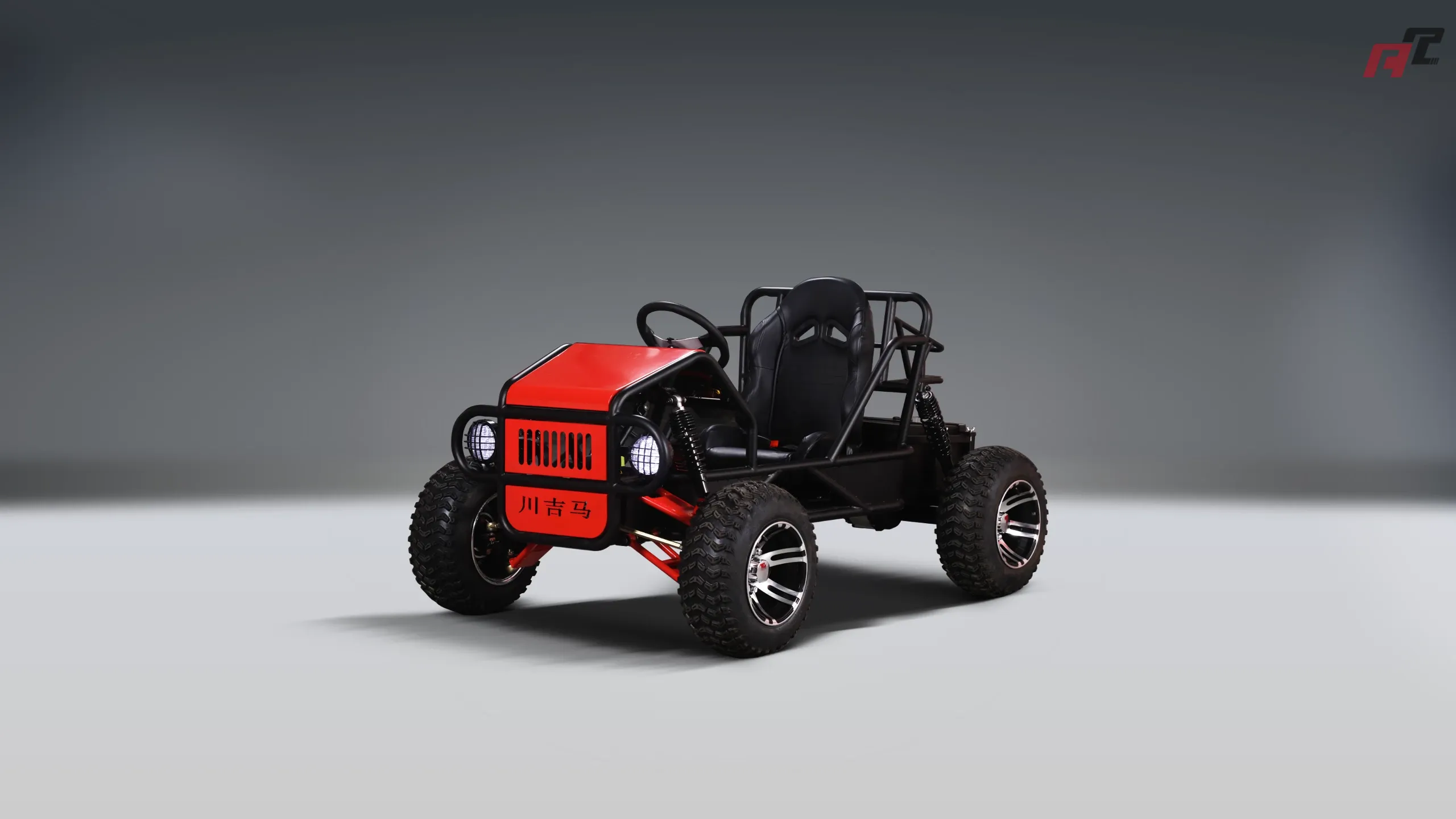
Kids Electric Off Roads One-seater ATV
Discover adventure with the ANCHI Kids Electric One-seater ATV, the perfect electric off-road experience for young explorers. Designed for safety and performance, this electric off-road go kart for kids offers unmatched thrills on any terrain. Its durable build and easy-to-use controls ensure a fun and safe ride. Ideal for budding adventurers, this ATV promises endless excitement. Explore the world with confidence with ANCHI’s innovative electric off-road solutions for kids.


